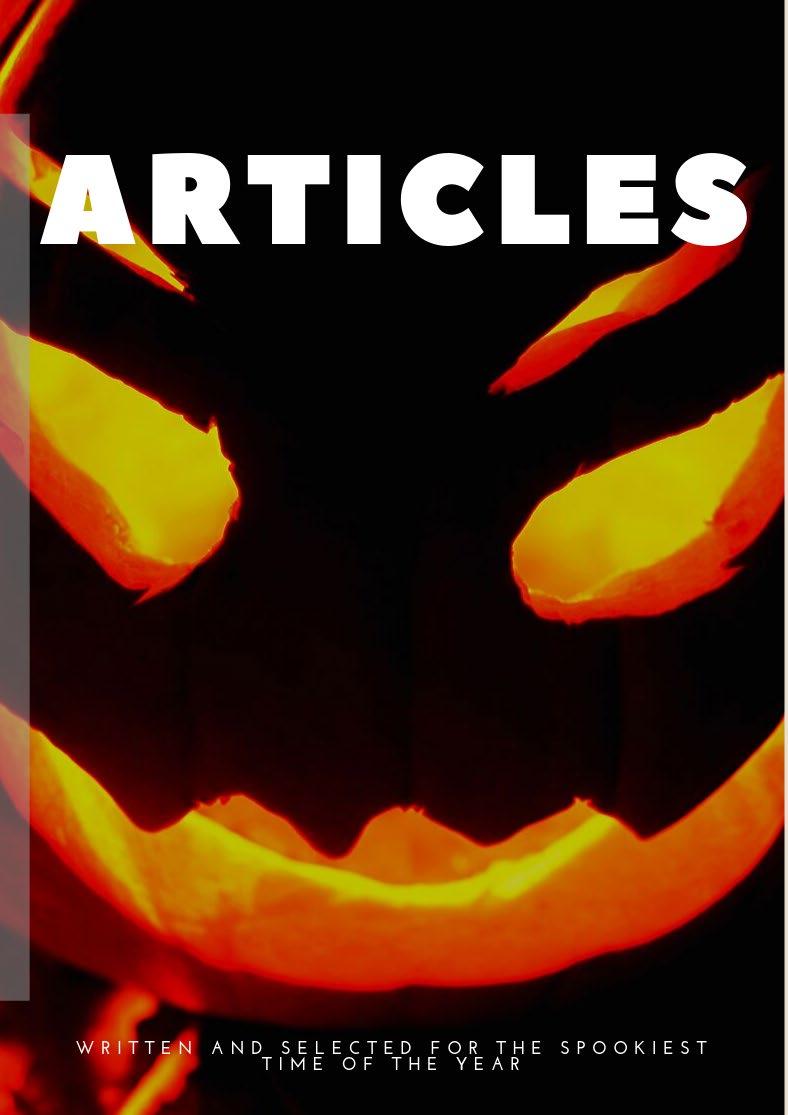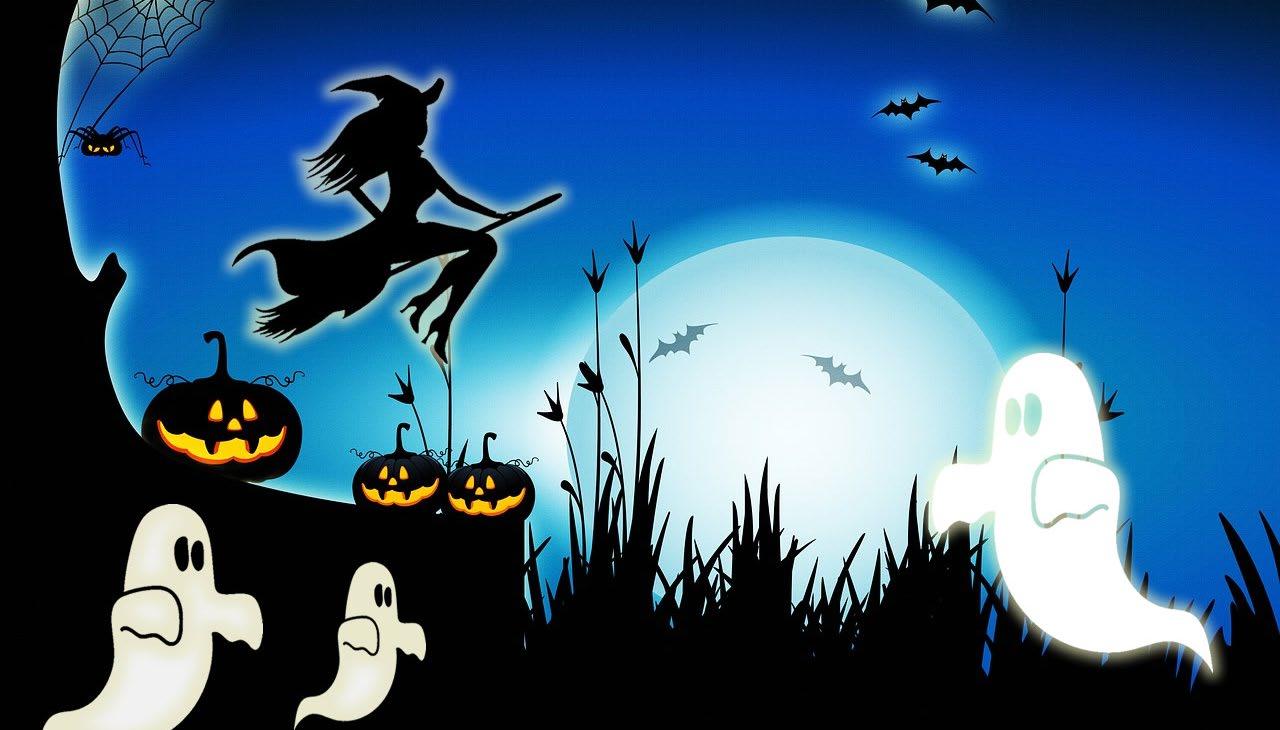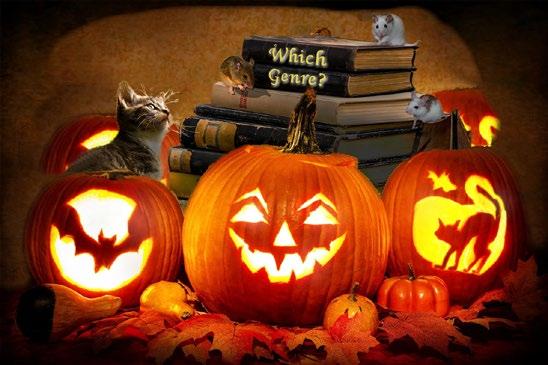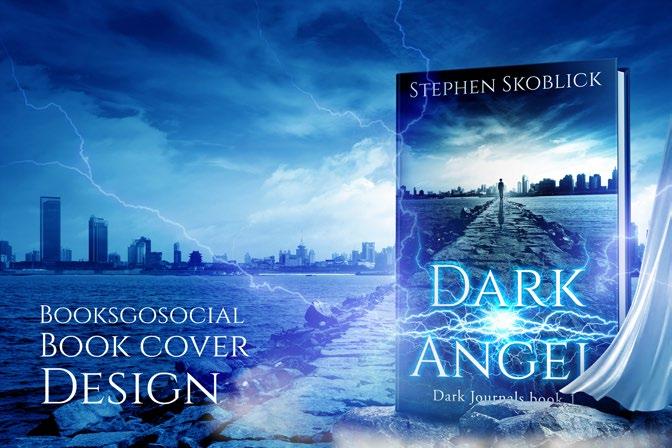
7 minute read
Articles


Advertisement
The True Hallowe’en Genre by Holly Bell
Go on .. guess …. Horror, right? Are you sure? Sure you don’t see the one standing behind it, lurking in the shadows, breathing quietly in the night ….


The rival contender is none other than the comparatively new kid on the block: the cozy paranormal mystery. If you haven’t yet investigated its delights, here is a brief summary:
There is a mystery, customarily murder. The sleuth is most likely an amateur female, usually a witch. There are ghosts. There is no explicit engagement of a romantic nature. The untimely death typically takes place off-stage. The language is inoffensive, and descriptions of fatalities and casualties are not graphic.
Here’s a rundown of horror from literary historian J. A. Cuddon: ‘A piece of fiction in prose of variable length ... which shocks, or even frightens the reader, or perhaps induces a feeling of repulsion or loathing.’ The cause of extreme unease is often, but not necessarily supernatural in nature.

So which of these is most faithful to where Hallowe’en comes from? Where is that? Closely allied to the Feast of Samhain (sah-oo-wn) that celebrated the turn of the season, it was a time to remember the dead. First, saints, then everyone. Presumably, not everyone had fond memories of those who had passed, or had reason to suspect that the deceased had less than fond memories of them! Consequently … the moment had come for some anti-phantom action. Time for a costume change and to see if you could out-ghost them with a scary makeover, and send them scurrying back to the Netherworld.

On the other hand, there was a useful aspect of the three-day spectrefest. As the veil between the human and spirit worlds was thought to be thinnest at that point in the calendar, what better time to tune in for the inside track on where your future was headed? What you need then was a diviner. In short, a witch.
See where we’re going with this? There you have it: witches and ghosts. Furthermore, it would be reasonable to assume that those were the two focus points of the stories that were told on the three nights of the Hallowe’en celebration.
You might appreciate a word on the subject from M R James, a giant of the genre, of what makes a ghost story: ‘A pleasing terror’, no ‘explanation
Where to start? The top-selling authors currently, according to the latest K-lytics statistical report on the genre, are Annabel Chase, Amanda M Lee and Tegan Maher. You can check them out on Amazon.
So this year, why not get back to our Hallowe’en story past, dig up a cozy, something not too grave, let it spirit you away to a mystery in a charming village and entertaining characters witch you will love, without a ghost of a chance of a sleepless night afterwards.
Happy Halloween
Holly Bell

Holly Bell - Humorous and quintessentially English with excitement and magic. Cat adorer and chocolate lover, Holly Bell is a photographer and video maker when not writing. Holly lives in the UK and is a mixture of English, Scottish, Cornish and Welsh, among other ingredients. She had long experience of non-fiction writing before being told she could write cosy mysteries! Her favourite feline is a black cat called Bobby. Join the newsletter for updates http://amandacadabra.com/come-on-in/

Has Your Character Ever Celebrated Halloween? by J.L.Canfield
Characters are people we give birth to. Sometimes they are children when born other times they are adults. Every writer knows it’s crucial to understand dialogue and age connection so that a reader relates to the character. Few writers go deeply into a character’s background. But they should. Most writers never get beyond physical appearance, age, setting, or religion. These are critical to breathing life into the creation, but more is needed. Bringing a character to life on paper before you begin telling its story, helps make the bond between reader and character stronger. To bring it fully to life, you must give it flaws and scars, and every one of those things has a history also.


One way to build the path of bonding is to go beyond researching the setting a character lives in. Dive deeper. How does this community celebrate holidays? Does the high school and or middle school have Halloween dances and festivals? Is there a group of teens who gets community service hours for dressing up and handing out candy in the hospitals to kids who are stuck there unable to take part in a time-honored American ritual of childhood called trick to treat-ing? After Halloween, what’s going on at Thanksgiving? Is there a Christmas parade downtown?
Unless a work is centered around a holiday, the back story of a character does not typically consider the influences such events may have had in the characters past. But if a writer wants the reader to emphasize with a protagonist or antagonist completely, then they should. For example, let’s say your character refuses to decorate their home, inside or out for a holiday. The reader may not
think this is a big deal, but psychologically there’s a disconnect, especially if the reader is a colossal decorator no matter the occasion. Back story can put into context the reason this character does not celebrate. Was it because on Halloween he was scared by older kids who took his treats? Did a playmate or sibling run in front of a car while trick or treating and die in front of them? Perhaps one Christmas the character had a parent who left the family after the gifts were open?
Celebrations are critical times in human lives, and so they are valuable in creating the personality of your characters. Every human has some terrible memory of a holiday gone wrong. Maybe they were sick, or someone died. Perhaps they didn’t get a gift they were wanting. Maybe a tree fell on the house. Food poisoning was served as a side dish or a hurricane or snowstorm that kept them inside. Was it something else? You, as the writer, have the right to determine how traumatic the incident was and the long term effects it has had on your character.
Research heavily into a country’s traditions if you are setting this story somewhere away from your homeland. That will help guide you in how your character handles celebrations and holidays. Most countries have a Thanksgiving celebration, just not the same day as America. Europeans celebrate All Saints Day and All Hallows Eve in ways based on ancient pagan rituals. Old World and New World have similarities, but knowing the differences in how each culture celebrates will affect your storyline, deepen it. If you understand they like cutting down trees at Christmas or carving pumpkins with evil faces, show it. That knowledge will craft a believable personality a reader either loves, empathizes with, or hates.

Strong characters can keep a reader turning the pages even if the storyline fails to make them give-up or suspend the innate disbelief that lives in humans. Sharing a little backstory on why your character always dresses as a witch for Halloween or is afraid of clowns or cowers when Christmas lights twinkles will keep the reader engaged. More stories with the same characters are the start of a series and a series for a writer is the beginning of a new family. Make this family the one you always wanted. How will your character family be celebrating Halloween this year?
J.L. Canfield, born in Florida, raised in North Carolina, currently residing in Virginia with her two dogs, believes books are the best way to escape the stresses of life and hopes you’ll enjoy escaping in hers. Life is best lived in well-written books, so live yours well. Find out more about her here:


